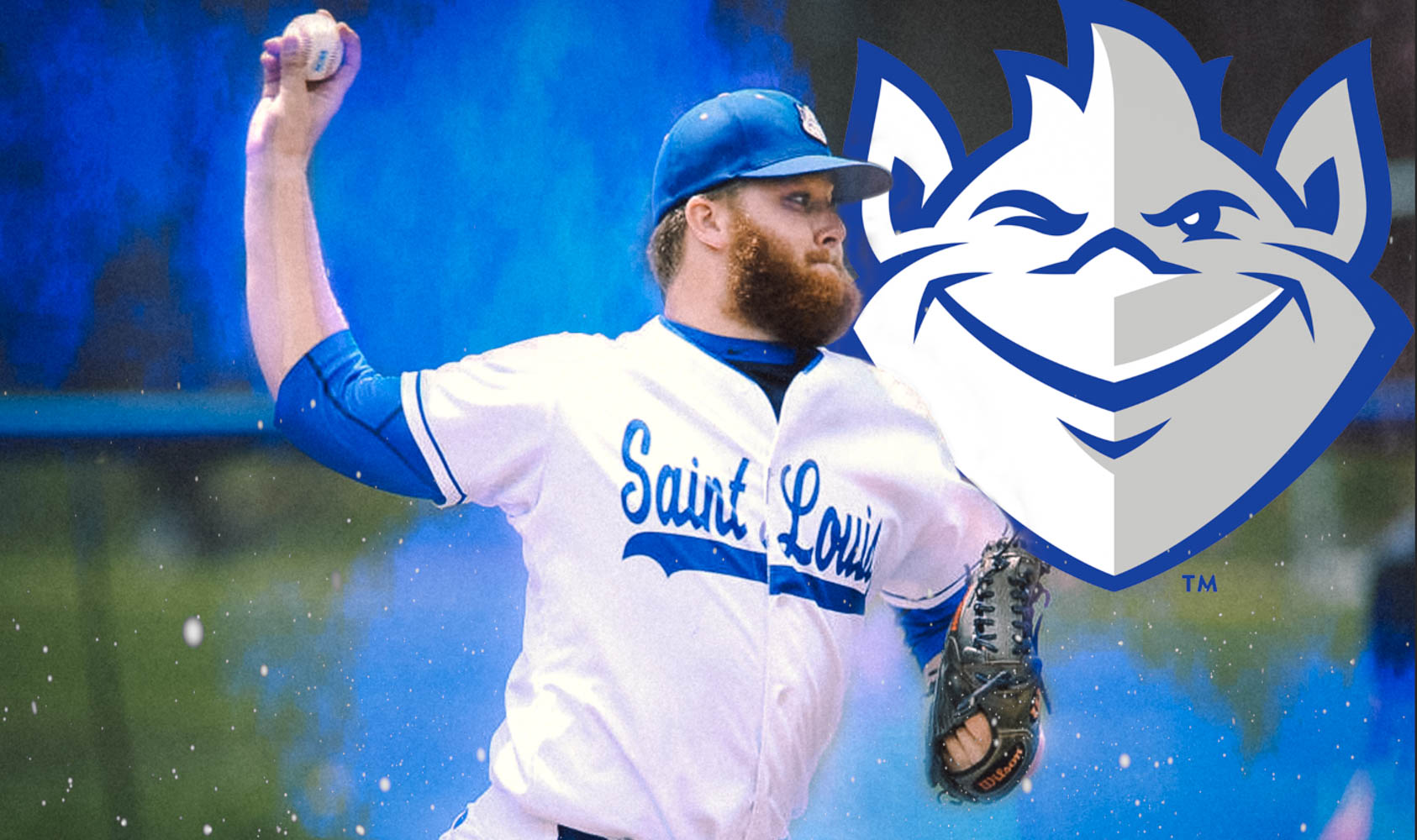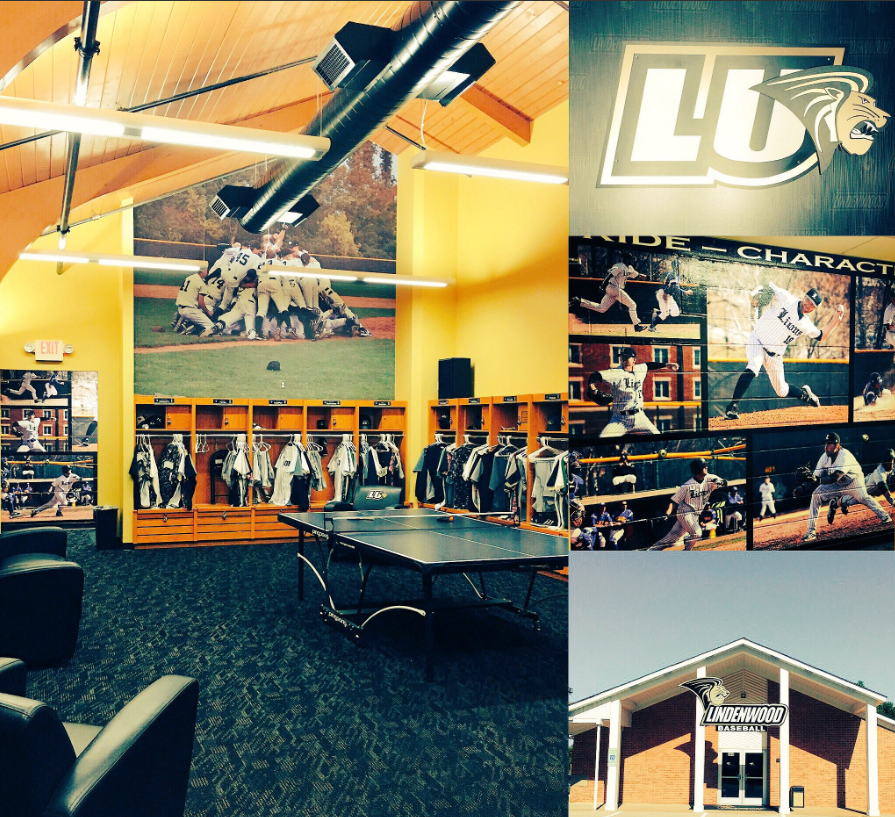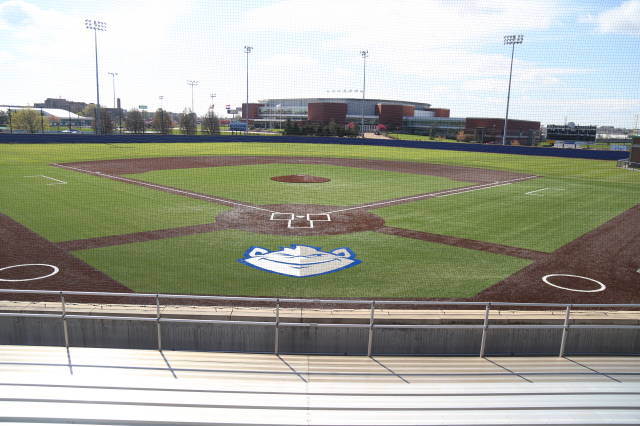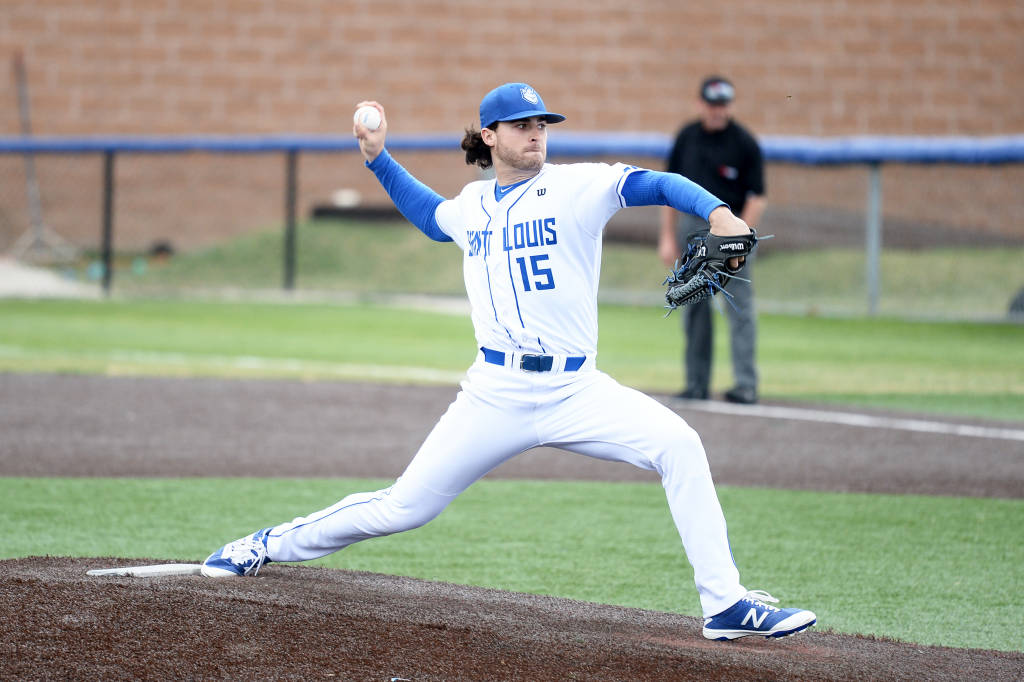Coaches Series: Implementing a Driveline Program at a D1 College

This post was written by Tyler Anderson, then volunteer assistant coach at Saint Louis University and now pitching coach and recruiting coordinator at Lindenwood University. Saint Louis finished 35-22 with the third most wins in a season in program history.
Heading into my first season at St Louis University, I met with Head Coach Darin Hendrickson during the summer to discuss what his team had done as a pitching staff in previous seasons and what changes or additions we could make. We got on to the topic of weighted balls and if I had any experience implementing them—which I had not. SLU had just come off a season where they had put in a weighted-ball program that yielded mixed results. The coaching staff was on the fence in regards to using them again for the upcoming season.
My previous school had casually used Plyo Ball ® for recovery, but that was the extent of their weighted ball use. (I must add, this school has a successful track record in producing pitchers at the collegiate, minor league, and major league level, highlighting that there isn’t only one way to do things!) However, I had done a lot of research on weighted balls and felt that if implemented correctly, a program could be extremely beneficial.
I read countless articles on weighted balls, including Hacking the Kinetic Chain, and reached out to coaches I knew that were using them in their program. One of the first calls I made was to Westmont Pitching Coach (and my former JC pitching coach), Tony Cougoule. I knew Tony had been doing Driveline and a lot of his players spent the summer in Washington at the Driveline facility. I had a ton of questions as to how they did it day to day and what benefits he had seen.
The research and conversations allowed me to compile a plan that encompasses the entire year (fall, winter, and spring). My key takeaways included the following:
Weighted balls
- help condition the arm, reducing soreness and possibility of injury
- improve the potential for an increase in velocity
- allow for more efficient arm path through drill work that does not require outside verbal cues
- train intent—the intent to throw hard, revealing existing velocity
- assist in reorganizing mechanical patterns to produce a more efficient & durable pitcher.
I was convinced that a weighted-ball program would help us. Obviously as a new coach on an established coaching staff, I was hesitant to leap in, but Coach Hendrickson was supportive and trusted that I had done the work to ensure that we could help our pitchers improve on last year’s results.
Fall: Getting Familiar with the Staff
A critical decision occurred in the fall when we actually decided not to do any weighted balls. The biggest factor in this decision was my unfamiliarity with the staff. I felt that I needed to get to know the guys, their mentality, and their physical capabilities. On top of this, we had a number of pitchers coming off injuries, as well as varying workloads after a season of summer ball. During the first practice, I quickly identified that, as a whole, our pitching staff was physically out of shape. As with any team, there were a variety of reasons: some guys were carrying a little too much weight, some guys had not done enough conditioning over the summer, some had injuries, etc.
Implementing the weighted-ball program from day one in the fall would have been a disaster, and I’m glad we spent the fall getting in shape. Conditioning came in the form of strength training, sprints, and medicine ball work at practice. By the end of the fall, I felt that our guys were in considerably better shape, displaying increased levels of mobility and flexibility. Mobility and flexibility are critical elements of a weighted-ball program, so we implemented movement screening to measure advancements of each pitcher prior to commencing the weighted-ball program. We managed each pitcher’s throwing program and innings, which gave us a good base fitness level to start the program.
Winter: On-Ramping Begins
Towards the end of the fall and heading into the winter, we implemented the “On-Ramping Program.” On-ramping is typically a 6-week program, but we made the decision to cut it in half because of our guys’ fall workload. Our players were enthusiastic and ready to start, buoyed by experiences of a number of pitchers who had done the program in the past. These guys really helped in teaching and assisting their teammates complete the drills correctly. I sought constant feedback, monitoring and documenting any soreness or discomfort.
Early on, we received feedback that some players were challenged by the black ball (2000g/4.4 lb.), reporting that it was too heavy and uncomfortable. I believe it is important to adapt an approach or program to each player’s mental and physical requirements—as I said above, there isn’t only one way to do things. Not wanting to force something onto the staff that they were uncomfortable with, we varied elements of the program to suit individual requirements. In fact, we even held two pitchers out all together during this phase due to their screening results and had them perform corrective drills until they were ready later in the year.
Winter Break: High Velo, High Usage
We were asked our staff to complete the “high usage” and “high velo” plans over their break and at home unsupervised by coaches. This felt risky because we wouldn’t be able to monitor them all the time, but we believed there would be a reward because, if completed correctly, the staff would improve their arm speed and strength.
We moved into the off-season program with no issues and solid feedback from our pitchers. As a coaching staff, the challenge is putting your trust in your players (and realizing that they don’t always need a coach breathing over their shoulder). We had the staff complete two weeks of this element under supervision before leaving for break. We worked extremely hard to educate the team on the “why” of this phase (how it would help them), but even more importantly, we also educated them on what they may experience during the phase, such as tired arm, or a slight drop in velocity as a result of workload. We really stressed the importance of pre and post throwing and stressed that buying-in and correct execution were critical.
Spring: Blend to Season
Players returned from winter break with approximately five weeks before our season opener. During this time, we commenced the blend-to-season program. We modified this element for individual pitchers based on their roles (starter or reliever). I was excited (and relieved) to see the benefits of all the hard work starting to kick in. Our velocity tracking of fall scrimmages and the run-and-gun portion of the program recorded four guys touching 90 mph on occasion. Within the first three weeks after winter break, we captured eleven pitchers touching 90 mph on the mound during bullpens. While the vast majority were not maintaining this velocity across the entire throwing session, it was obvious that the program had led to advancements.
An interesting observation made by the coaching staff during this period was the increased level of durability across the pitching staff. In years past, we’d usually see guys coming back from break by slowly building up pitch counts while reporting general soreness. We noticed our guys were able to throw more pitches in their bullpens earlier than usual while also responding better the following day with decreased or no arm soreness.
In-Season: Maintaining Gains
The weighted-ball program continued during the season. The program caters to bother starters and relievers, and we allowed players to modify programs to fit their needs (pre- and postgame). At this point, our guys couldn’t even function without doing their foam rolling, lacrosse ball, and weighted-ball programs before picking up a baseball—which was reassuring! As a result of the positive buy-in from the team, we upgraded our facility to include a horse stall right behind our bullpen mounds, allowing our players to do the Plyo Ball ® before the game and during game for our relievers if needed.
Review and Changes
When I look back and reflect on our season, I would say that year 1 of the program was a huge success. On the field, we posted a 35-win season (3rd most in school history); we broke the school record for strikeouts with 449; our Friday night starter, Miller Hogan was drafted as a draft-eligible sophomore in the 32nd round by the Milwaukee Brewers (and will return to school), and our closer broke the school record for saves with 14.
The program contributed to building a culture of hard work and established the importance of taking care of the human body. Pitchers understood concepts like pre and post self-myofascial release and the use of Jaeger bands. Arm care became something the pitching staff did on their own and not something we had to constantly remind them to do. We had an incredible record of physical health—which I believe was the result of foam rolling, lacrosse ball, band work, and Plyo Ball ® before throwing—so pitchers were properly warmed before playing catch and not playing catch to warm up.
The positive-pattern building through the Plyo Ball ® work helped us moved away from verbal cues that were not very effective to begin with. While the program added velocity across the board, it also added health. We did not have one player miss an inning, start, or outing due to an arm injury or soreness. Our guys were able to hold velocity deep into games, and their velocity did not fluctuate from outing to outing.
While the program is depicted as “Just Weighted Balls,” one of our major success stories was not directly attributable to the weighted balls themselves. We had a freshman pitcher who was low to mid 80s on the mound and had clear lead/landing leg issues. When we did the run-and-gun portion of the program, we noticed he was one of the top two or three hardest throwers on our staff. We recognized that he was able to land more effectively and efficiently during this section of the program, which made it much easier to diagnose the major issue in his delivery. We implemented a program of medicine-ball drills and more run and guns, and we were able to fix the stability issues in his front leg. Within four to six weeks he was mid to upper 80s off the mound and ended up playing a significant role for us.
We continue to make changes to the program and are always looking to improve. This year our guys will do weighted balls during the fall because they have been through the program for a full year (we will hold out freshman/transfers depending on movement screening) and we will adjust the program for guys coming off big inning loads from the previous year or summer. The guys that have large inning loads will continue to lift, condition, and do the recovery portion of the program while also long tossing and completing sub-maximal command work. We continue to upgrade our facilities to cater to the program and will add more horse stall mats to our indoor facility allowing us to get more guys through the Plyo Ball ® work a little quicker.

Since implementing this program at SLU, I took a new position as the Pitching Coach and Recruiting Coordinator at Lindenwood University. This was a great opportunity for me to join a school coming off a 40 win season and a trip to the D2 World Series. It also gave me the opportunity to recruit and be able to expand on the program I implemented at SLU. We currently have 1 week of practice remaining in the fall and then wrapping up with our fall World Series. Our pitching staff has almost completed the on-boarding weighted ball program and as soon as the fall wraps up will move into the offseason program. I have implemented the Driveline weighted ball program similar to what I did at SLU but have made a few changes.
We have added 1-2 command pens per week, one which features 4oz, 5oz and 6oz baseballs. We also have 1 velo pen and as an off day a shadow pen. Throughout the fall we have seen improved command across the staff, a slight increase in velocity in most guys but the greatest result we have had is that everyone has been healthy and the feedback is that their arms feel better than ever.


Comment section